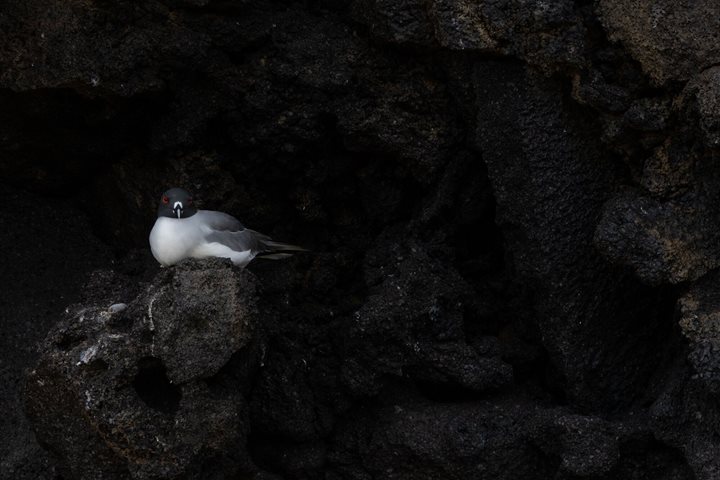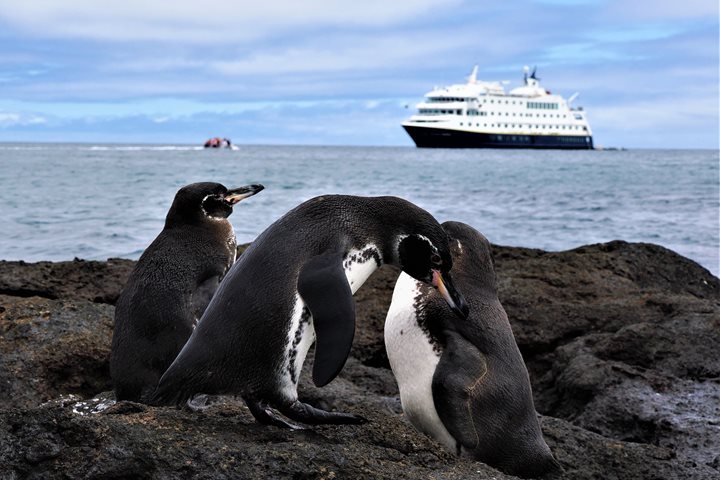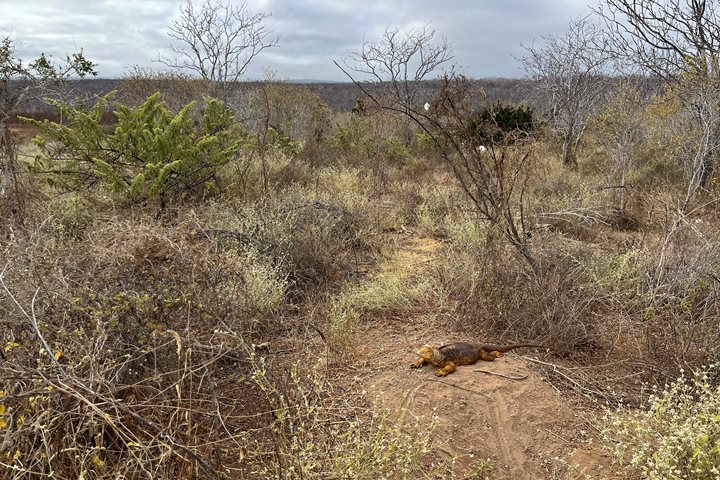Our day started very early to visit the iconic species which gave the name to these islands. The giant tortoises or “Galapagos tortoises” are acknowledged across the world as fascinating reptiles which made their arrival and establishment on this hostile terrain millions of years ago. Due to adaptive radiation, they split up into fourteen species spread out on different islands; from which ten species are still alive. This morning we got to know the endeavors of conservation at the Charles Darwin Research Station, where we met species of land tortoises whose populations declined almost under threat of extinction caused by introduced species and human unsustainable conducts before the Galapagos Islands were declared National Park. Thanks to the combined efforts of the Galapagos National Park and the Darwin Research Station on these land tortoises’ breeding center, their population has augmented considerably, placing these efforts among the most successful projects for conservation worldwide. Santa Cruz is the largest populated island in Galapagos, and part of the expedition for this day was to get an approach of the human element. That is why we visited a local school on the highlands of Santa Cruz today, where we experienced the challenge of linking conservation with education. Our group enjoyed being led by the local students who guided us around their school and explained to us what a day of class is like and what their social mission is. They were even so kind to give us a taste of a slice of a pie cake they were baking by themselves.
At lunch time, we headed on to Aquelarre Restaurant, still in the highlands. Good service and an overwhelming landscape captured our senses, while the glass of pure fruit coconut or blackberry juice waiting for us at the entrance and giant trees reminded us we were in a very humid area surrounded by thick vegetation. After lunch and having recharged our energies we proceeded to visit the private farm called Manzanillo, because of the occurrence of poison apple trees. All over its territory were giant wild tortoises eating and taking a bath at the red fern lake. We were amazed by the huge size of the males we found on our way to the forest of guaba trees and moss, which gave us a sensation of total wilderness. The species of endemic land tortoises found on this island belong to the Chelonoide porteri species, the largest coexisting in the archipelago. Fresh juices and fruits were being served once again, and we ended our visit by stopping at the lava tubes. We were impressed by the intense activity that happened millions of years ago, where the ocean and fire gave birth to this volcanic-origin archipelago.
Today was a non-stop day of unexpected events, like the festivities going on around Puerto Ayora, the port of this island. During the first days of this month, we locals celebrate the annexation of Galapagos to Ecuador, which was on February 12, 1832. That’s why today in the afternoon at the Plaza San Francisco on Academy Bay, Galapaguenians and visitors from all over the world created a vibrant atmosphere which showed us we live in a constantly changing system, where humans coexist with nature. We spent the evening watching the fantastic preliminary video about this expedition made by Steve, listening to an interesting presentation given by a member of the marine department of the Darwin Station concerning the current state of sharks and attempts for conservation inside the marine reserve. Along with this, we delighted in watching and dancing with the musical show onboard performed by local musicians and dancers.
As you see, traveling onboard the National Geographic Endeavour is so much fun! We all got to feel the pure essence of the islands. Galapagos is a land of excitement.







